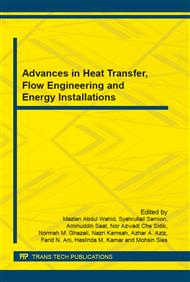p.495
p.499
p.507
p.512
p.518
p.523
p.530
p.536
p.541
Modeling of an Optimized Hybrid Energy System for Kutubdia Island, Bangladesh
Abstract:
This paper presents an optimized energy system model for a small locality in Kutubdia Island, Bangladesh at latitude of 21.82 °N, longitude of 91.86 °E. This isolated island is located at the southern coast of Bangladesh, separated from the main land by the Kutubdia channel. At present, grid connection from the mainland is not present and is not planned in the near future. The proposed energy system comprises Solar PV, Wind turbines, Biogas generators for power generation whereas a diesel generator has been used as backup power supply and batteries have been considered to facilitate energy storage. Hybrid Optimization Model for Electric Renewable (HOMER) has been used to obtain an optimized system comprising all the renewable energy resources present. The designed energy system consists of 28 kW Solar PV panels, 30 kW Wind Turbines, 8 kW Biogas Generator, 9 kW Diesel Generator. The system generates electricity with a renewable fraction of 97%. The cost of electricity has been estimated as US$ 0.42/kWh considering 10% Rate of Return with an initial capital cost of US$ 199,541.
Info:
Periodical:
Pages:
518-522
Citation:
Online since:
January 2016
Authors:
Keywords:
Price:
Сopyright:
© 2016 Trans Tech Publications Ltd. All Rights Reserved
Share:
Citation:


